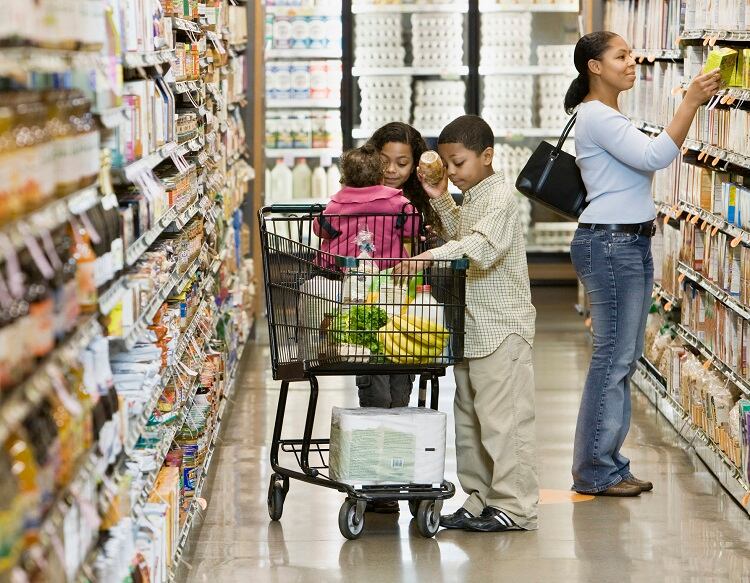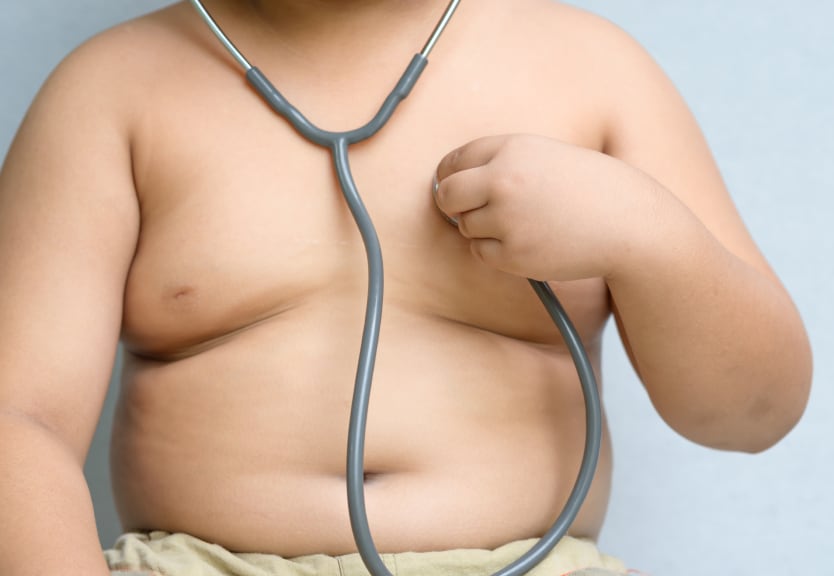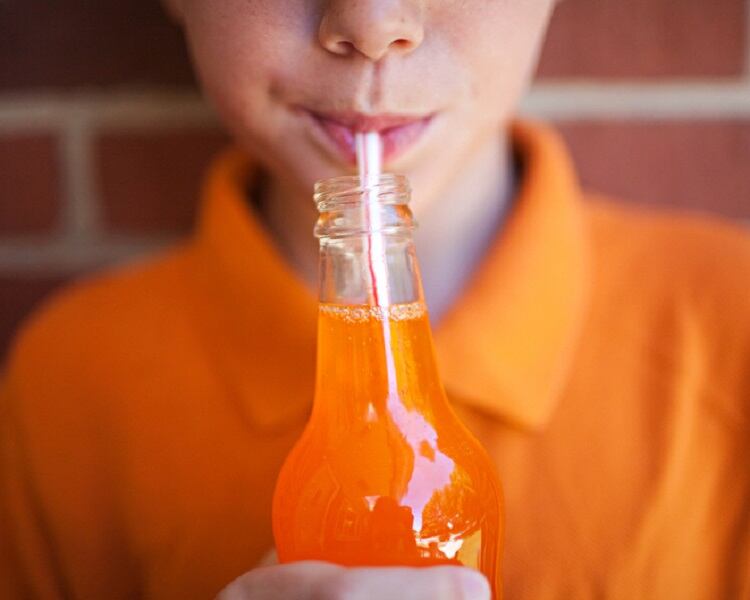More than 381 million children and adolescents worldwide are overweight or obese.
Swiss food giant Nestlé, which sells more than one billion products per day, is well placed to play a key part in helping to reduce obesity rates and improve public health across the globe.
This was the impetus behind its ‘Nestlé for Healthier Kids’ initiative, which launched in May 2018. The project aims to help 50 million children lead healthier lives by 2030.
One year on, the programme has developed across three main priority areas, according to global manager for Nestlé for Healthier Kids, Henri-Pierre Lenoble.
“The first priority…is to make sure that we understand the needs and the gaps in children when it comes to nutrition,” he told delegates at this week’s Seeds and Chips conference in Milan.
This knowledge comes from ‘nutritional landscaping’ across the 190 countries in which Nestlé sells its products. “We do detailed studies to understand not only the dietary intakes of the child, but also how everything is related to the life of the child: what are the snacking opportunities, what is the family situation in terms of feeding practices, [as well as] on a socio-economic level?”
Lenoble also highlighted the importance of determining specific lifestyle traits and behaviours, including tracking circadian rhythms. “All these [elements] are having an impact on the health of the child. These are the kinds of things we are trying to understand when we operate in these countries.”
Nestlé's 'nutritional landscaping' top line results
In the US, 16% of children (aged 9 to 13 years) skip lunch.
Low firbre intake is an issue affecting children around the world, Nestlé found. Australian and Mexican children eat 1 g less than the daily recommended fibre intake; in Brazil, they eat 5 g below the recommended daily intake; while in the US, children eat 11-12 g below the recommended daily fibre intake.
75% of Chinese children fall short on vegetable recommendations.
80-97% of Brazilian, Filipino, Russian and Chinese children consume too little calcium.
Sweetened beverages are the top added sugars source, followed by grain products and desserts.
“The main use of [this data] is to influence the portfolio,” Lenoble continued.
Transforming the product portfolio
Nestlé is careful to strike the right balance between personalised nutrition and improving overall global health.
On the one hand, personalised nutrition means responding to the individual needs of a child that may have a food intolerance or a disease such as Crohn’s, said Lenoble.
However, nutrition – including personalised nutrition – must also serve to improve global health. “Everything we do must have an impact from a public health [standpoint]…When we talk about reducing sugar, and increasing grains and fibre, this is going to have an impact from a mass point of view.”
“We are a big company. We sell more than one billion products per day. So anything we do in mass products is likely to have an impact, and we can try to make a positive impact by…innovating with our products” – Nestlé’s global manager of Nestlé for Healthier Kids, Henri-Pierre Lenoble.
In transforming its product portfolio, the company has made a number of forward-looking commitments, pledging to:
- Add 750 million portions (80g) of vegetables by 2020.
- Add 300 million portions (16 g) of fibre-rich grains and pulses by 2020.
- Add at least 300 million portions (16 g) of fibre-rich grains, pulses, nuts and seeds to products.
- Further reduce sugars by 5% - the firm has removed over 40,000 tonnes of sugar from its portfolio since 2014.
- Further reduce salt by 10% - the firm has removed 15,000 tonnes of salt since 2012.
Recent launches that fall under the Nestlé for Healthier Kids initiative include products by Maggi, Gerber, and Nido.
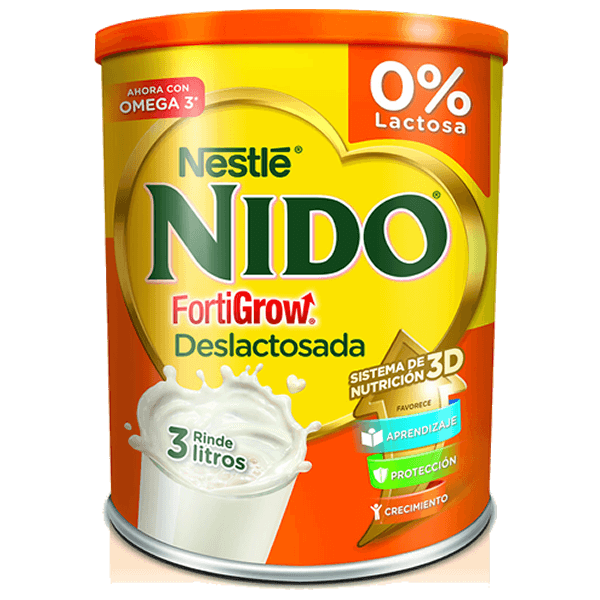
Nestlé’s Nido FortiGrow milk solution is one such example. As a lactose-free, fortified powdered milk for babies and young children, the product caters to individual needs. Nestlé recently launched this lactose-free version across a number of countries in South America.
Another Nido example responds to Nestlé’s ‘nutritional landscaping’ results, which showed that a high percentage of children in Latin America are skipping breakfast. The Nido GoldenStart Breakfast on the go drink is a ready-to-drink solution containing all “the central nutrients for breakfast”, said Lenoble, citing calcium, vitamins and minerals.
Under its Gerber label, Nestlé has also released healthy snacks for toddlers. “We boosted the grains and fibre content in this product,” Lenoble explained. The ‘popped’ organic crisps are made from a blend of quinoa, chickpeas, and sorghum, combined with veggie bits. Each service contains 4 g of whole grains and 2 g of plant-based protein. Aligning with its sodium and fat reduction pledges, the crisps are baked not fried, and are unsalted.
In India, the company has also favoured a baked – rather than fried – approach with its Maggi Nutri-Licious Baked Sweetcorn Noodles. The noodles are a source of protein and fibre.
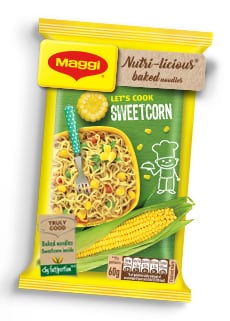
In Italy, Nuovo Nestle Nesquik recently entered the market. The product contains 30% less sugar than the original chocolate-flavoured drink mix. “Sugar-reducing is one way to [deliver] personalised nutrition for the masses,” said Lenoble. “We know that – and the data is saying that – [children] are having too much sugar.”
This product is not to be confused with Nestlé’s Nesquik All Natural, which launched in Europe earlier this year. The drink mix is packaged in an innovative new paper material that is plastic-free and fully recyclable. “Nesquik All Natural is not claiming sugar reduction, but it actually is reduced in sugar,” he told delegates.
Personalised services
Under the Nestlé for Healthier Kids initiative, the food manufacturer has also launched a new service to help parents and carers in India make more nutritional choices for their children.
The platform, known as Nestlé India Nutrition Assistant (NINA) is the first artificial intelligence (AI) of its kind to launch in India. NINA was developed in collaboration with Google. “It enables voice conversation so [parents and carers] can call NINA and get advice on nutrition.
“You can have customised meal plans – especially if your kids have food allergies or [specific] food preferences,” Lenoble explained.
The platform offers a growth tracker, to monitor a child’s growth patterns, as well as a food diary with a nutritional score – to check the quality of daily nutrition. Simple and healthy recipes are also available to parents to encourage good nutrition in the home.
“We are running out these kinds of services in countries around the world,” said Lenoble.


